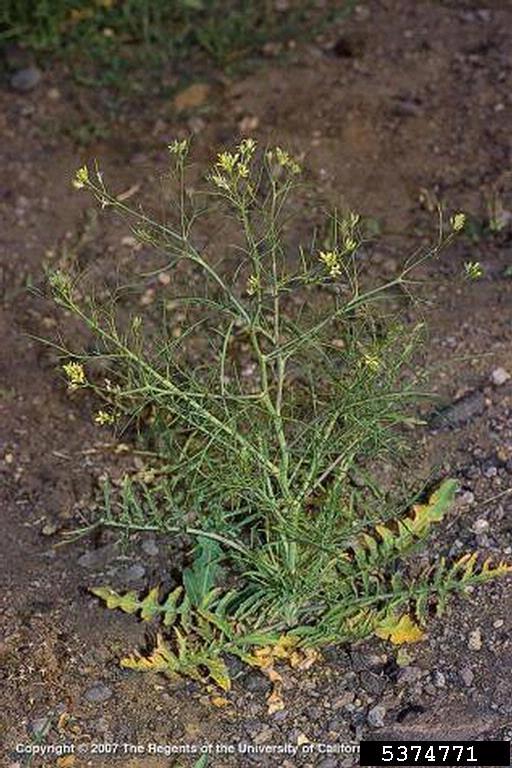Weed of the Month: Tumble Mustard
 | Author:
Allison Kosto, MSU Broadwater County Extension Agent
MSU Broadwater County Extension Agent |
Weed of the Month: Tumble Mustard
Allison Kosto, MSU Broadwater County Extension Agent
Contrary to popular belief, the word “tumbleweed” is a broad term that actually refers to several different plant species that can create a tumbleweed. Tumbleweed is a simplified term to describe a diaspore. A diaspore is a plant that has the ability to detach from the root or stem and roll with the force of the wind. Basically, it is a mechanism that plants have evolved to improve seed dispersal. We have several weeds in Broadwater County that have tumbleweed characteristics. In addition to tumble mustard, our weed of the month, it also includes Russian thistle, kochia, diffuse knapweed and baby’s breath.
Description & Habitat
Native to Europe and Africa, tumble mustard has naturalized through much of North America and most of the world. It was likely introduced as a contaminant in imported crop seed. It can be found in gardens, landscaped areas, cropland, rangeland, vacant lots, roadsides and other distribution sites.
It is an annual (life cycle of one year) plant with a tap root. It has a main steam that can reach a height of 5 feet and has many branches to give it a bushy appearance. At the base of the stem is a rosette with dandelion-like leaves. It has very small yellow flowers that are arranged in a cluster at the tips of the stems. Tumble mustard produces narrow seed pods that are 2 to 4 inches long. A single plant can produce up to a million seeds. Seeds can stay viable in the soil for up to 10 years. As the plant dries, it loses its leaves, breaks off at the base and tumbles with the wind.
Like other weeds, tumble mustard can displace native and desired vegetation and decrease forage production and plant diversity. It is known to be a pioneer colonist, often one of the first plants to establish a distributed site and is especially known to establish quickly after fire. Toxicity issues are rare but have been reported. The plant contains substances that cause digestive irritation.
Management
Avoiding disturbance or overgrazing is often effective to prevent the establishment of tumble mustard. It is not very competitive, so maintaining a healthy population of native or desired species is helpful to control it.
Once it is established, the key to managing it is to prevent it from going to seed. This can be done with hand pulling, digging or hoeing before seed production. Make sure to cut or remove the crown. Mowing can be effective but may need to be repeated. Tumble mustard can be grazed by livestock when young.
Herbicides are also an option and are most effective in the seedling stage. The plant is sensitive to most chemicals at this stage. Always read and follow the entire label when applying herbicide. Common chemical names are used for clarity but does not imply endorsement of a product or brand.
For assistance on weed identification and management, contact the MSU Extension Office in Broadwater County at 406-266-9242.
Article Images
Click on Image Thumbnail(s) to view fullsize image
PhotoCredit: Allison Kosto
Image 1 Caption: Tumble Mustard
